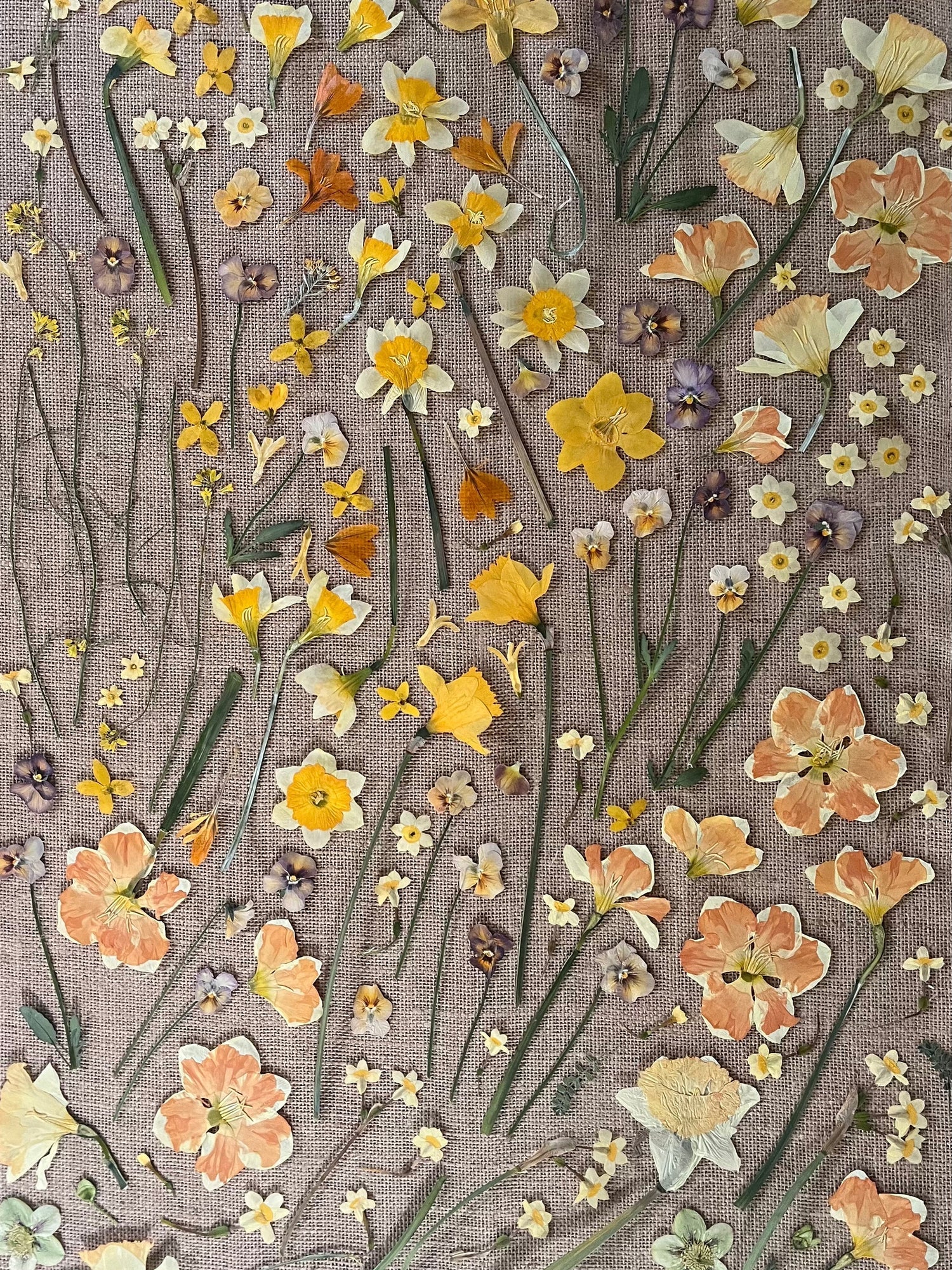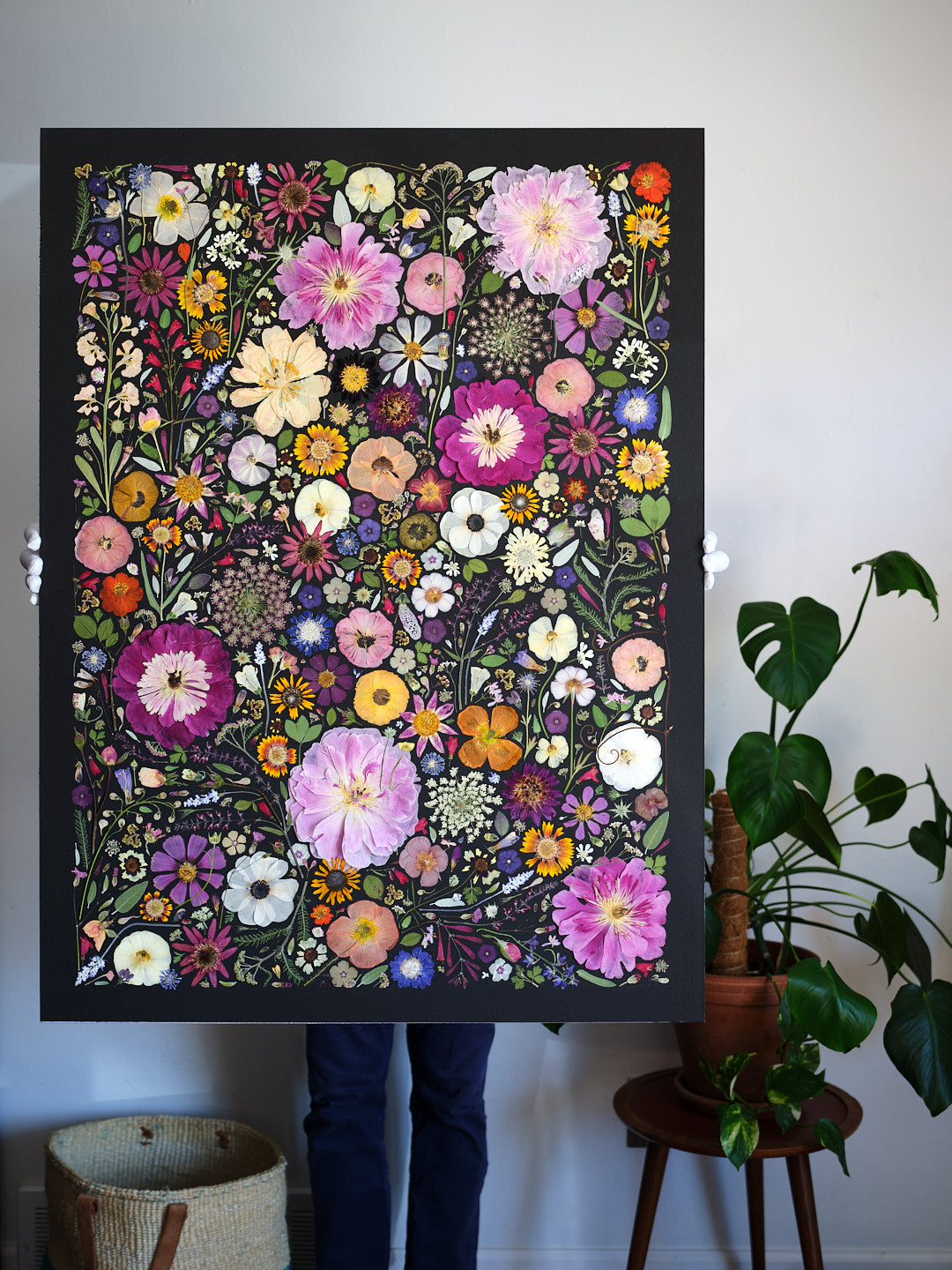We recently posted a video on YouTube talking about the glue we use for gluing our pressed flowers. I'm adding a few supplemental tidbits of info to go along with the YouTube video. These aren't by any means the only glues you can use for you pressed flower art - it's just the glue we've come to enjoy using.
Here is a list of the five glues we cover in this video with their affiliate links (and a paintbrush set we like):
- Lineco Neutral pH Adhesive
- Golden Acryl Med, Heavy Gel Matte
- Perfect Paper Adhesive, Matte
- Gorilla Dual Temp Mini Hot Glue Gun Kit
- Gorilla Heavy Duty Spray Adhesive
- Transon Artist Paint Brush Set
The page of flowers we glued in this course:

The PPA glue is the thinnest and most spreadable glue on this list. We use it for things like reconstructing the petals of roses, peonies, or dahlias. Rachel likes to use this to reconstruct flowers, where as Keith will use the Lineco glue, which is a bit thicker, for reconstructing flowers. It's really personal preference. While all these glue do dry clear, the PPA glue is what we use if you need to seal something on the front of a flower, like a really seedy center of a rose that may otherwise continue to shed once your piece is framed. You can easily spread a thin layer of the PPA glue over the top of problem areas of a flower and no one will know the difference once it dries.
The Lineco Neutral pH glue is probably our go to glue. It's the second most spreadable glue. We use it 90 percent of the time for our gluing applications. This is a great all around glue that can be used to glue most flowers down. The Golden Heavy Gel is a much thicker glue and we use it for gluing heavier flowers such as on the back center of a large rose or a sunflower. We rarely use the hot glue gun, but if we do, it will be on things like dried poppy pods or king proteas.
Finally we use spray glue for things like grasses or feathers that would otherwise be very hard to apply glue with a regular paint brush. Spray glue is very unforgiving and once you commit your flower to your glass or paper backing, it's kinda there to stay. We also hate the environmental impacts of spray cans and we do try to avoid using them as much as possible.
If you are worried about petals curling upwards and you want to make sure they stay flat, you will want to apply glue to most parts of the flower petals. If you are framing the piece and glass is going to go right up against the petals, this isn't as much of an issue. But if the glass is going to be raised a bit off of the pressed flowers, and sitting directly on top of them, I would consider gluing the flowers to the edges so they don't curl up. We don't mind a little curling as it gives the piece a bit of depth, but know this may not be for everyone.
As you can see in the following two images, the edge of the lisianthus is curling up a bit as well as the edge of the anemone that is floating off the paper. Again, we don't mind a little curl. Things will curl more in humid climates. If this bothers you, you can always apply the glue more to the edge of the flowers or put a little dab of glue to keep the petals down. For super thin petals you may be able to see the glue through them. Spray glue leaves less marks, but if you by a mistake let a part of the petal touch another part of the flower when covered in spray glue, good luck to you righting that wrong. Once spray glue touches any surface, it's really hard to unstick the object without ruining the flower.

Here's an example of an anemone floating off the page where it's not glued down.

We hope this helps you get started in gluing. It's by far the most common question we get asked, so we figured it was time to write a post/do a video on it. Don't be afraid to try other glues. If you are unsure as to whether a glue will work, try gluing a petal down to the paper or glass with the glue you want to try and see how the flower reacts to it over the next few days. If there is no reaction in those two days, you should be good to go! If glue is going to negatively react with any part of the flower, the delicate petals will be it. So if the petals survive the glue, the rest of the flower will too!
Happy creating!





4 comments
What type of paper is that, that your gluing the petals too?
Get fresh flower bouquets, vases, or and gift boxes from the best flower shop in Dubai with same-day flower delivery. So, shop now!
Same question as above. What product’s are best to seal your work that won’t change the color of your dried flowers? I glue on 4×6, 5×7 homemade cotton paper. Thank you for all that you do. HOw lucky are we that you share your work with the world.
Hi, I’ve been unhappy with mod podge products. I press my beautiful flower and decorate vases, is there another sealer you could recommend that won’t take color out of the flowers and doesn’t leave brush marks please? Thanks